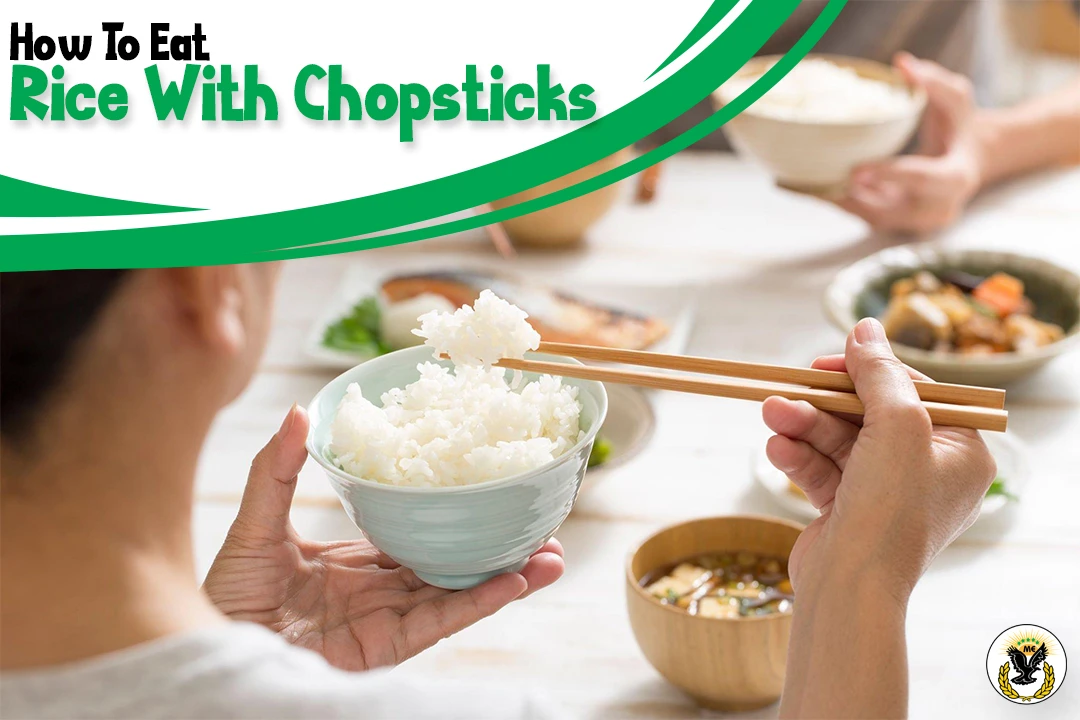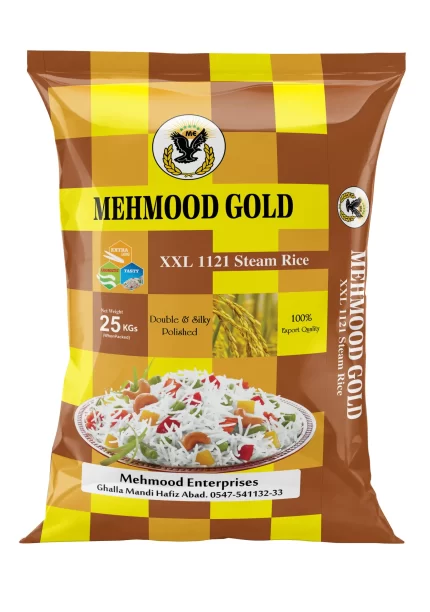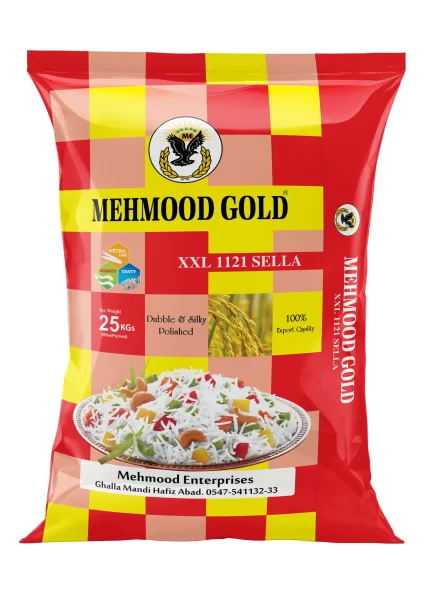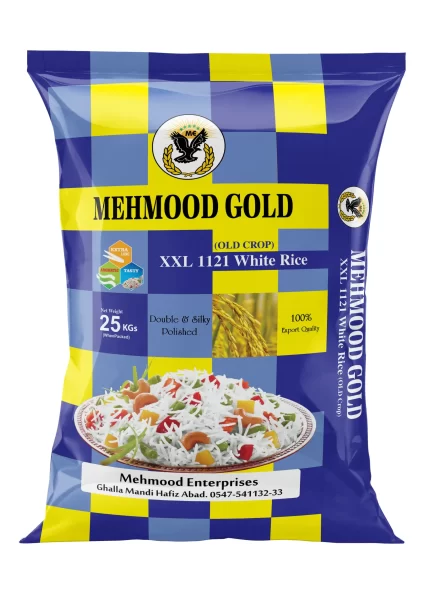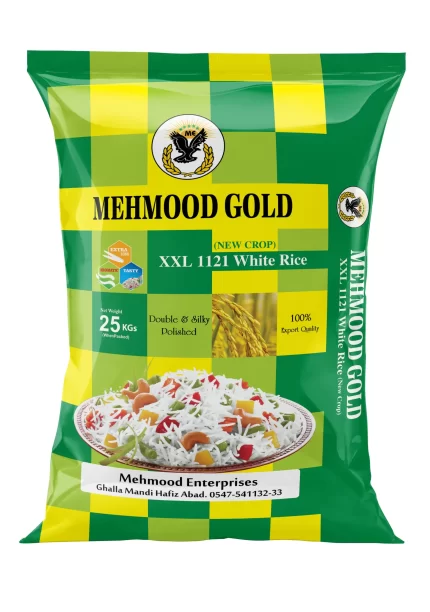Mehmood Enterprises! As connoisseurs of premium rice, we understand that using chopsticks can be a daunting task for many. Yet, in many cultures, chopsticks are the go-to utensil for savouring the delicate flavours of rice. So, why not give it a try?
In this guide, we’ll walk you through a step-by-step process on how to eat rice with chopsticks, transforming your dining experience to a whole new level!
Our easy-to-follow guide is designed to make the process simple and fun. Whether you’re a beginner or simply looking to refine your chopstick skills, we’ve got you covered. The guide will provide you with practical and helpful tips, ensuring you master the art of eating rice with chopsticks quickly and easily.
Remember, it’s not just about getting the rice from the bowl to your mouth; it’s about enjoying the journey of each grain. So, let’s dive in and embrace this new culinary adventure together!
Step-by-Step Guide To Eating Rice With Chopsticks
You’ve got your bowl of rice in front of you and your chopsticks in hand, ready to dig in. But wait, how exactly do you do that? Fear not! Here’s a step-by-step guide on how to enjoy your rice with chopsticks, just like the pros!
Step 1: Hold Your Chopsticks Right
Firstly, it’s all about the grip. Hold the upper chopstick with your index, middle finger, and thumb, much like holding a pen. The lower chopstick should rest against your ring finger and the base of your thumb. This chopstick remains stationary while the upper one does all the moving.
Step 2: Pick Up Your Rice
Now let’s get to the action. Angle your chopsticks towards the rice, using the upper chopstick to push against the stationary one to pick up the grain. Remember, it’s all in the wrist movements!
Step 3: Enjoy Your Rice
Once you’ve successfully picked up the rice, it’s time to enjoy your meal. Move the chopsticks to your mouth and gently slide the cytomel side effects rice off with your tongue. Please, no biting down on the chopsticks!
Step 4: Practice Makes Perfect
Don’t be discouraged if you can’t get it right immediately; it takes some getting used to. Keep practising, and soon you’ll be eating rice with chopsticks like a pro!
And remember, at Mehmood Enterprises, we believe that eating rice should be a joyful experience. That’s why we ensure our rice is of the best quality, providing you not just a meal, but an experience. Enjoy your rice, enjoy the experience!
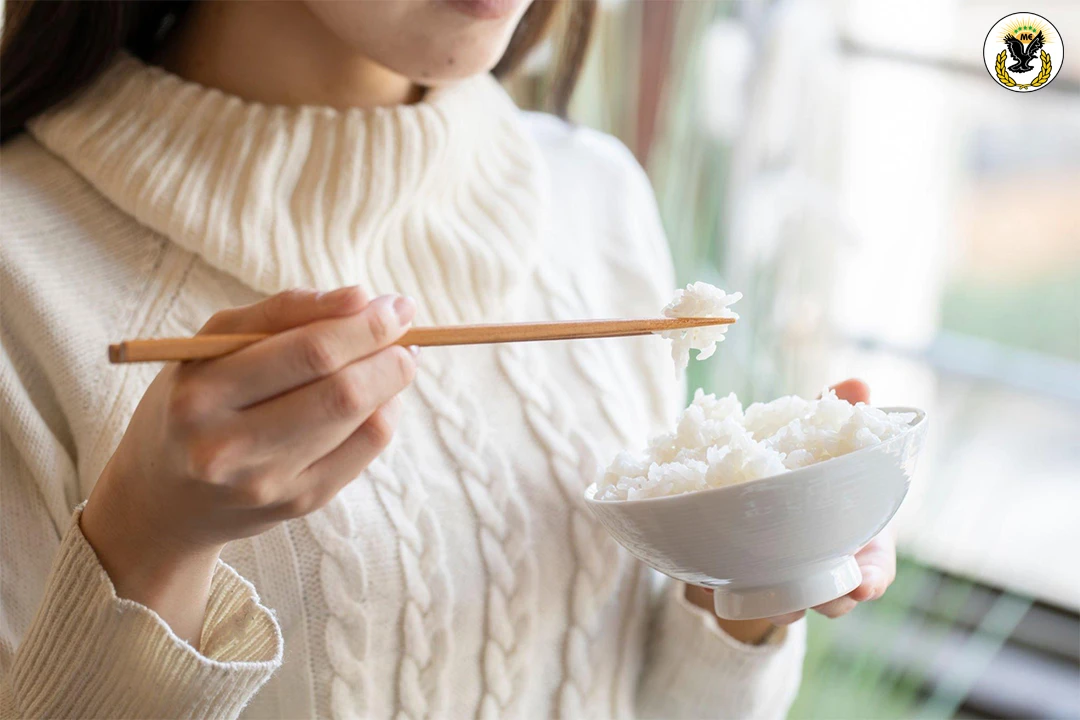
Tips For Beginners To Eat Rice With Chopsticks
Welcome to the thrilling world of chopsticks! If you are new to this Asian culinary tradition, don’t worry, we’re here to guide you step by step. We will share some basic tips and tricks to help you master the art of eating rice with chopsticks. Remember, patience is key. So relax, enjoy the process, and you’ll be impressing your friends with your chopstick skills in no time!
1. Grip the chopsticks
First and foremost, let’s make sure you hold chopsticks correctly. Position the first chopstick in the crook of your thumb and rest it on your ring finger. The second chopstick is held like a pencil, with your thumb, index, and middle fingers. Ensure the tips of the chopsticks are even, not crossing or askew.
2. Pick up a small amount of rice
When starting, it is advisable to go for small amounts of rice. It may seem challenging to pick up rice grains initially, but once you get a feel for it, you’ll find it easier. Aim for clumps, not individual grains, and grip tightly but not so hard that the rice squeezes out.
3. Lift with ease
Once you’ve got a hold on some rice, lift it slowly. Avoid any sudden or jerky movements as they might cause the rice to scatter.
4. Bring the rice to your mouth
Finally, bring the chopsticks to your mouth and eat! Try not to let the chopsticks part or slide against each other as it can cause the rice to drop. Remember, the goal is not to see how high you can lift the rice off the plate but to get it to your mouth smoothly and efficiently.
“Practice makes perfect. It might seem a little tricky at first, but with time, eating rice with chopsticks will become as easy as using a fork and knife!”
5. Practice with larger pieces
Once you feel confident eating rice, try using chopsticks to pick up larger pieces of food. This will help you improve your chopstick skills and give you the confidence to use them in any dining situation.
Remember, the key to mastering chopsticks is practice, patience, and positivity. So keep trying, and soon enough you’ll be eating rice with chopsticks like a pro!
Common Mistakes To Avoid While Using Chopsticks To Eat Rice
So, you have decided to embark on the delightful journey of eating rice with chopsticks. That’s a great decision! However, there are some common mistakes that many first-timers (and even some seasoned users) can fall into. By avoiding these pitfalls, you can enhance your chopstick skills and enjoy your rice experience to the fullest. Let’s dive into it.
Mistake 1: Holding Chopsticks Incorrectly
Mistake 2: Spear Your Rice
Mistake 3: Stirring or Sifting Through Your Food
Mistake 4: Licking Your Chopsticks
Mistake 5: Leaving Chopsticks Vertically Stuck in Your Rice Bowl
Mistake 6: Passing Food with Your Chopsticks
Remember, practice makes perfect. So don’t be discouraged if you don’t get it right the first time. Keep practising and soon you’ll be enjoying your rice with chopsticks like a pro!
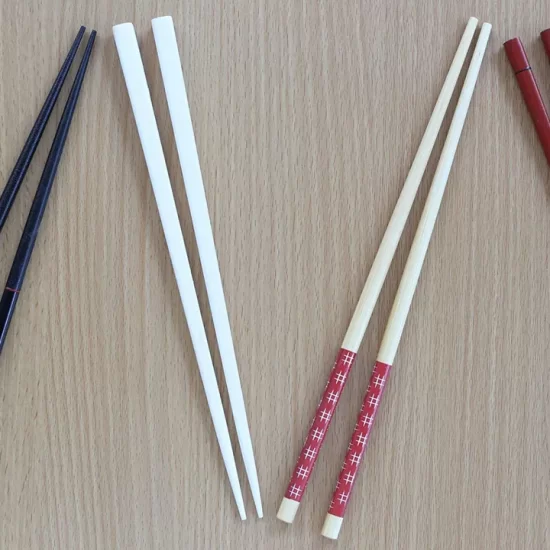
Different Types Of Chopsticks And Their Usage
At Mehmood Enterprises, we believe that the rice-eating experience can be raised with the right tools. One such essential tool is the traditional pair of chopsticks. But did you know there are different types of chopsticks, each with its distinctive usage when it comes to eating rice? Let’s explore!
Chinese Chopsticks
Chinese chopsticks, also known as ‘Kuaizi‘, are long, thick, and square in shape. They come with a blunt tip, making them perfect for scooping rice and larger pieces of food.
Japanese Chopsticks
Japanese chopsticks, known as ‘Hashi‘, are shorter and taper to a pointed end. Ideal for picking up small grains of rice or delicate pieces of sushi.
Korean Chopsticks
Korean chopsticks, or ‘Jeotgarak‘, are unique because they are made of metal and are flat, not round. They pose a challenge due to their slippery surface but are excellent for picking up sticky rice.
Advantages Of Using Chopsticks To Eat Rice Over Spoons Or Forks
Ever wondered why chopsticks have become a staple in Asian cuisine, particularly for eating rice? The use of chopsticks to eat rice offers several advantages over using spoons or forks, and it’s not just about tradition. Here’s why:
- Enhances Enjoyment:
Using chopsticks can transform eating into an immersive experience. It encourages you to slow down, engage with your food, and truly savor each bite. This mindful eating can enhance the overall enjoyment of your meal. - Portion Control:
Unlike a spoon that can scoop up large amounts of food, chopsticks pick up much smaller portions. This allows for better portion control and promotes healthier eating habits. - Safety:
Chopsticks are typically made out of bamboo, wood, or stainless steel, materials that don’t conduct heat well. This means that they won’t get hot to the touch, even when picking up hot food, ensuring safer eating. - Environmentally Friendly:
If you’re using reusable chopsticks, you’re making an eco-friendly choice. They’re easy to clean, long-lasting, and a sustainable alternative to disposable cutlery.
“Chopsticks aren’t just utensils, they’re also a way of life. A testament to a culture that values mindfulness, harmony, and balance.”
Chopsticks Vs Spoons And Forks: A Visual Comparison
| Chopsticks | Spoons/Forks | |
| Portion Control | Excellent | Less Controlled |
| Safety (Heat Resistance) | High | Variable |
| Environmental Impact | Low (with reusable chopsticks) | High (with disposable cutlery) |
In conclusion, using chopsticks to eat rice has its unique advantages. It’s a skill worth learning, not just for the cultural experience, but also for the benefits it brings to your dining experience. So why not give it a try?
Different Rice Dishes To Eat With Chopsticks
Ever wondered about the different rice dishes you can enjoy using chopsticks? Well, the versatility of rice extends beyond the reach of a spoon or fork. Chopsticks can skillfully pick up this grain staple, adding a unique layer of enjoyment to your eating experience. Let’s dive into some rice dishes that are perfect for chopstick use.
1. Sushi
Starting our list is the famous Japanese dish, Sushi. Sushi is a combination of vinegared rice, usually adorned with other ingredients like seafood and vegetables. The compact nature of the sushi roll makes it ideal for picking with chopsticks.
2. Fried Rice
Next up, we have Fried Rice, an Asian speciality that varies in style from region to region. Whether it’s the Chinese Yangzhou fried rice, Thai pineapple fried rice, or Indonesian Nasi Goreng, these dishes are often enjoyed with chopsticks due to their chunky, easy-to-pick ingredients.
3. Bibimbap
Korea’s Bibimbap is another epicurean delight you can savor with chopsticks. This dish consists of warm rice topped with seasoned vegetables, chili pepper paste, a raw or fried egg, and sliced meat. Mixing all the ingredients together with chopsticks adds to the fun of eating Bibimbap.
4. Onigiri
Onigiri, or Japanese Rice Balls, are triangles of rice wrapped in a sheet of nori (seaweed), often filled with pickled plum, salted salmon, or any other salty or sour ingredient. These handheld treats are traditionally eaten with fingers, but chopsticks can provide a more elegant and mess-free alternative.
5. Biryani
Let’s not forget Biryani, a spicy rice dish from the Indian subcontinent. This aromatic, flavorful dish, filled with meat, vegetables, and a blend of spices, might seem unconventional for chopstick use. However, the challenge of picking up loose, long-grain rice with chopsticks might just make your Biryani experience even more enjoyable.
No matter which dish you choose, remember that practice makes perfect. So, grab your pair of chopsticks and start exploring the fun of eating these delicious rice dishes!
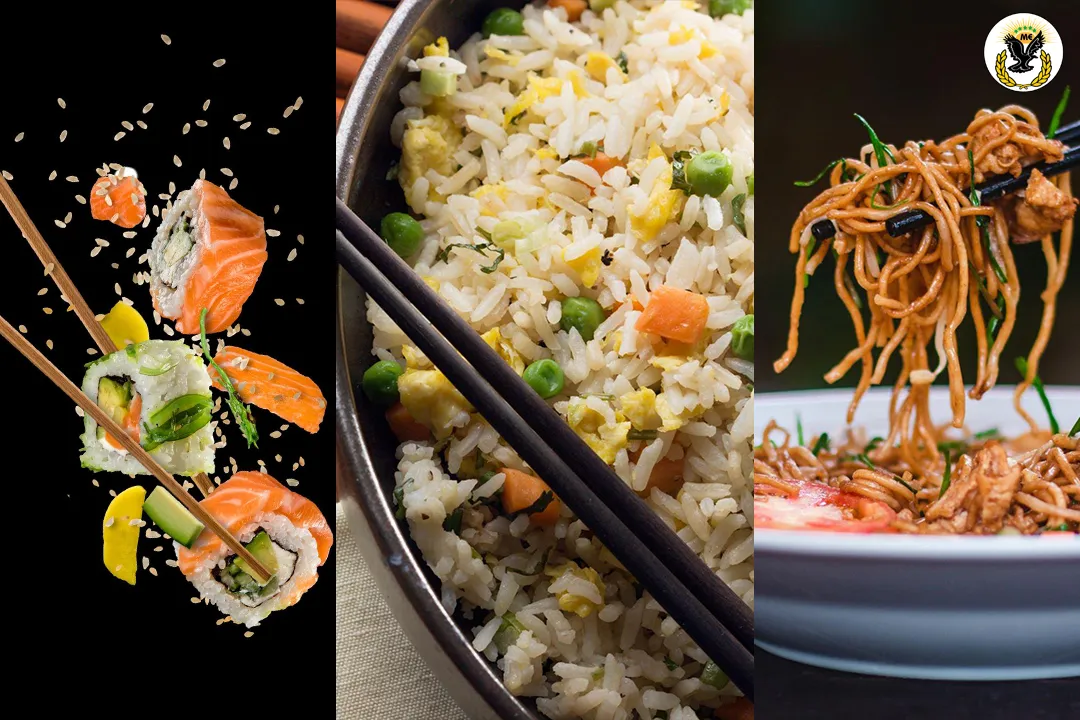
Conclusion
And there you have it! You’ve now learned the art of eating rice with chopsticks. It’s a skill that might seem challenging at first, but with practice, you’ll find it’s not only doable but also quite enjoyable. Remember, it’s all about balance and control, so don’t lose heart if you drop a few grains of rice in the beginning.
Ans: Rice, especially sticky rice, can be held together easily. Hold your chopsticks toward the top, not the middle. Pick up a small amount of rice by pressing the chopsticks together and lift it gently to your mouth.
Ans: Short grain rice, particularly the type used in sushi, is easier to eat with chopsticks because it sticks together better than long grain rice.
Ans: No, it is not considered impolite. Restaurants in many Asian countries often provide chopsticks as standard utensils. However, the etiquette of using chopsticks varies across cultures, so it’s always a good idea to observe or ask about local customs.
Ans: It can be tricky but not impossible. The tip is to use the chopsticks to press a grain of rice against the side of the bowl or plate, then gently lift. The key is to practice. With time, you’ll be able to pick up even single grains of rice with ease.
Ans: Things you should avoid using chopsticks:
- Don’t dig around: Considered impolite, one should not dig around in their rice looking for specific pieces.
- Avoid pointing: It’s considered rude to point chopsticks at others while eating.
- Never cross them: In many cultures, crossed chopsticks have negative connotations, so it’s best to avoid doing so.

